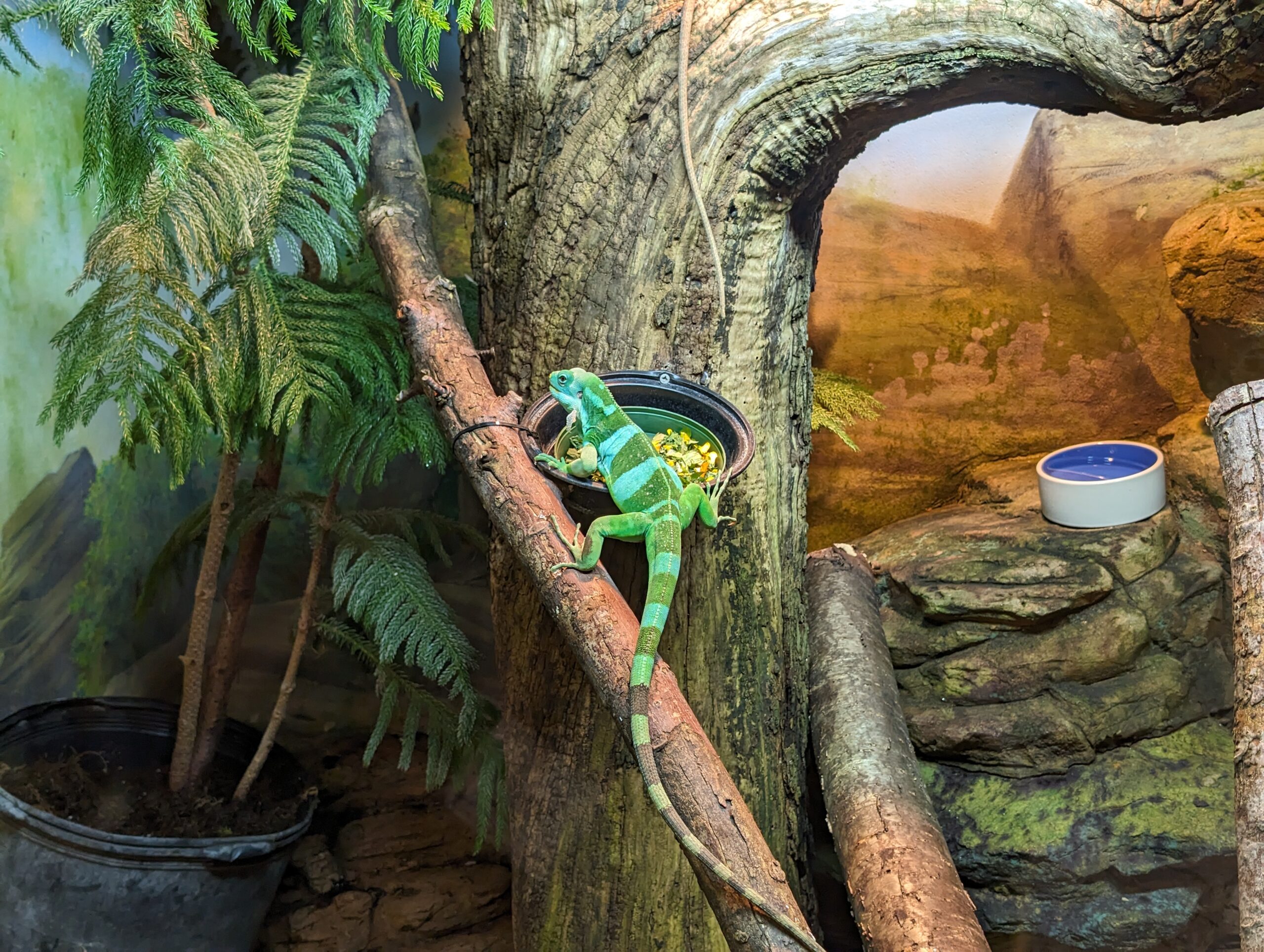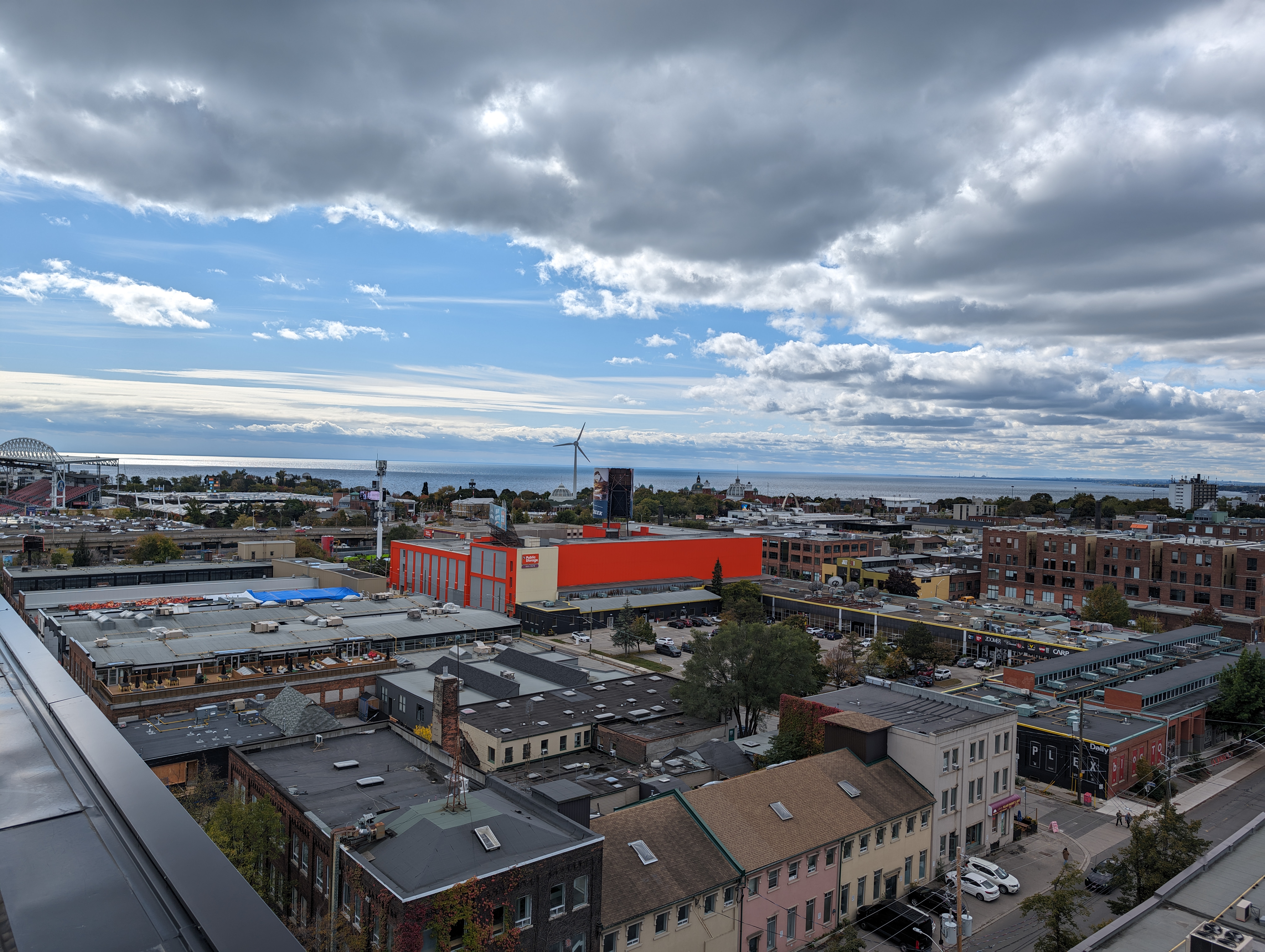The Pros
- Great design changes
- Cool camera features
- 7 years of Feature Drops, OS and Security patches
The Cons
- More expensive this year
- Thermometer can't measure skin temperature yet
- Battery life could be better
At Google’s recent event, the company revealed its Pixel Watch 2, Pixel 8 and Pixel 8 Pro. While my colleague Jon focused on the Pixel 8 and Pixel Watch 2, I spent the last week putting the Pixel 8 Pro through its paces to determine if it’s a worthy successor to its predecessor, the Pixel 7 Pro.
Unfortunately, just a week isn’t enough to fully test out the smartphone, but during the past seven days, I’ve spent time with its camera, experienced what the Tensor chip is capable of and put its battery through the wringer.
The Pixel 8 Pro is a solid device and a step up from its predecessor, but it doesn’t offer enough for Pixel 7 Pro users to run out and buy a new smartphone. However, with 12GB of RAM, the Tensor G3, a 5,050mAh battery and new cameras, the Pixel 8 Pro is still worth considering if you’re using a smartphone older than the Pixel 6.
Pixel 8 Pro
Display
6.7-inch, (1344 x 2992) QHD+ display, 489ppi, 1-120Hz refresh rate
Processor
Tensor G3
RAM
12GB of RAM
Storage
128GB, 256GB, 512GB, 1TB
Dimensions (in.)
6.4 x 3.0 x 0.3in. (162.6 x 76.5 x 8.8mm)
Weight
213g
Rear Facing Camera
50-megapixel (f/1.6) + 48-megapixel (f/1.95 x5 zoom,) + 48-megapixel (f/2.8)
Front Facing Camera
10.5-megpaixel (f/2.2) autofocus
OS
Android 14
Battery
5050mAh
Network Connectivity
5G, LTE, Wi-Fi 6E
Sensors
Fingerprint (in-display), accelerometor, gyro, proximity, compass
SIM Type
Nano SIM, eSIM
Launch Date
October 12, 2023
Misc
Colours: Obsidian, Porcelain, Bay (blue)
Display
Pixel 8 Pro
6.7-inch, (1344 x 2992) QHD+ display, 489ppi, 1-120Hz refresh rate
Processor
Pixel 8 Pro
Tensor G3
RAM
Pixel 8 Pro
12GB of RAM
Storage
Pixel 8 Pro
128GB, 256GB, 512GB, 1TB
Dimensions (in.)
Pixel 8 Pro
6.4 x 3.0 x 0.3in. (162.6 x 76.5 x 8.8mm)
Weight
Pixel 8 Pro
213g
Rear Facing Camera
Pixel 8 Pro
50-megapixel (f/1.6) + 48-megapixel (f/1.95 x5 zoom,) + 48-megapixel (f/2.8)
Front Facing Camera
Pixel 8 Pro
10.5-megpaixel (f/2.2) autofocus
OS
Pixel 8 Pro
Android 14
Battery
Pixel 8 Pro
5050mAh
Network Connectivity
Pixel 8 Pro
5G, LTE, Wi-Fi 6E
Sensors
Pixel 8 Pro
Fingerprint (in-display), accelerometor, gyro, proximity, compass
SIM Type
Pixel 8 Pro
Nano SIM, eSIM
Launch Date
Pixel 8 Pro
October 12, 2023
Misc
Pixel 8 Pro
Colours: Obsidian, Porcelain, Bay (blue)
It’s all about ‘Bay’
The Pixel 8 Pro offers the best design Google has released in years. I enjoy the rounded corners that make the smartphone feel slim and easy to hold. Even Jon, who usually opts for smaller handsets, likes how the Pixel 8 Pro feels in his hands.
Further, Google has brought a matte back glass to the 8 Pro for the first time on a ‘pro’ Pixel. It’s difficult to explain how nice the back of this phone feels, but it’s so smooth it’s almost like soft porcelain. Seriously — if you’re walking by a phone store, you should feel the Pixel 8 Pro yourself.
![]()
The Pixel 8 Pro also sports a polished aluminum frame, Corning Gorilla Glass Victus 2, and a flat display. I typically prefer curved screens as I feel they’re more immersive; however, the new flagship trend is flat panels, which means the 8 Pro follows suit with other flagships like the iPhone 15 series.
The smartphone also sports a similar camera bump visor to last year’s Pixel 7 Pro. However, there’s a subtle difference as the cameras are together now instead of the periscope lens being on its own. I prefer this as it makes the Pixel 8 Pro look more uniform and generally better than its predecessor.
The 8 Pro comes in ‘Obsidian,’ ‘Porcelain’ and ‘Bay.’ As I mentioned in my hands-on preview with the high-end smartphone, I asked Google why it called it Bay, and I was told the option is designed to reflect the blue sky off of Mountain View Bay. It’s nice, and I like it, but I still prefer the Porcelain handset colour.
Better refresh rate, lower resolution
The Pixel 8 Pro now features a 6.7-inch LTPO display with a variable refresh rate that can go from 1Hz to 120Hz, which should help with the battery compared to last year’s flagship. The Pixel 7 Pro’s display was also variable, but it only went as low as 10Hz compared to the 8 Pro’s 1Hz.
Everything looks great on the Pixel 8 Pro’s screen, from watching content on Netflix, YouTube and other streaming apps. Oddly, the Pixel 8 Pro features a lower screen resolution than the Pixel 7 and 6 Pro devices. This year’s flagship sports a 1344 x 2992 pixel resolution versus a 1440 x 3120 pixel resolution with the Pixel 7 Pro. I can’t tell the difference between resolutions, but it’s odd Google lowered it this year.
![]()
Like last year, the Pixel 8 Pro sports an under-display fingerprint scanner that’s quick and accurate. Thankfully, the number of failed logins is very low. However, this year, Google updated Face Unlock, and its biometrics can now be used to authorize payments, which is very helpful. Further, unlike Apple’s Face ID, you can’t use the Pixel’s Face Unlock with sunglasses on.
The haptics feel improved from last year as well. However, I’ve spoken about this with Jon, who feels the same way, as well as other reviewers, and it’s unclear if it’s actually different or if I’m imagining the change. We’ve reached out to Google for clarification.
Pro Camera
This year, the Pixel 8 Pro features a 50-megapixel primary shooter with an f/1.7 aperture, alongside a 48-megapixel telephoto with 5x zoom, an f/2.8 aperture and 113mm lens, and lastly, a 48-megapixel wide-angle with a f/2.0 aperture.
Pictures look phenomenal, are vivid, full of detail, and feature accurate colour. I snapped shots of beautiful animals at the zoo, showing vibrant greens on lizards, an incredible amount of plumage detail in a great horned owl and even minor details like the dirt on a white rhino.
![]()
Like years past, the Pixel 8 Pro’s ultrawide camera is solid, although I can’t tell the difference between this year’s and last year’s shooters. The colours are still accurate, and the 120-degree angle remains great.
Google also added a macro feature this year. I personally don’t shoot macro pictures; they aren’t for me. However, it’s great the handset now includes the functionality.
The telephoto camera hasn’t changed from last year, but it’s still great. I’m happy Google is offering 5x zoom. Only Apple’s iPhone 15 Pro Max, which costs more than $1,700, offers this from the Cupertino company. To get 5x optical zoom from Samsung, you’ll need to buy the Galaxy S23 Ultra, which is about $200 more expensive than Google’s offering.
![]() Additionally, a pro camera mode can take full 50-megapixel pictures with any of your lenses. Shots with this feature offer even more detail and accuracy. It’s worth mentioning that the ultrawide and telephoto shooters are both upscaled to 50-megapixels; however, the difference between a 48-megapixel and a 50-megapixel shot is negligible.
Additionally, a pro camera mode can take full 50-megapixel pictures with any of your lenses. Shots with this feature offer even more detail and accuracy. It’s worth mentioning that the ultrawide and telephoto shooters are both upscaled to 50-megapixels; however, the difference between a 48-megapixel and a 50-megapixel shot is negligible.
I’m not a pro photographer and prefer to take pictures in the regular camera mode. That said, I’m glad that Google has finally added these features. I likely won’t use the feature often, but I can imagine turning it on in some situations. For example, you can’t really make out the buildings in this picture I took of Toronto’s Liberty Village. However, in the pro version of the photo, you can clearly see the small ‘BlogTO’ logo; even if you zoom in, it’s still quite clear.

Selfies also still look good. Last year, I found that ‘Real Tone’ was slightly inconsistent, but it seems like Google’s software is more accurate now. It displays my skin beautifully and accurately.
Low-light photography remains as solid as ever, with pictures that look vivid and full of detail. Colour accuracy seems to be on point, and the Pixel 8 Pro does a good job of brightening only points in the picture instead of awkwardly brightening an entire image.

Google also has other features coming to the Pixel 8 Pro, including the ‘Magic Editor.’ I’m looking forward to the Magic Editor, which lets users edit pictures with machine learning and AI. Even though the feature won’t be available at launch, I was able to try it. In my testing, it still seems to be at its base level. You have some control, like whether to resize something or remove background people or objects, but definitely not enough control in this respect. Further, the AI-generated options are limited per photo.
In some pictures, I can change the water and the sky, make it golden hour and more, whereas others only let me change the picture to a portrait. There are also stylized options that can dramatically change your picture, but each attempt only made my picture worse. I can definitely see myself using this feature for quick edits, like changing something to portrait or making the sky more dramatic, but I think the feature still has a long way to go before it becomes a tool I have to use. It’s also worth noting that using Magic Editor warms up your phone after some usage.
![]()
Best Take, another new AI camera feature, is found in your tools menu. Best Take replaces people’s faces from across a series of images to improve them. So, if you take many pictures of a group of people or even just of yourself, you’ll find the best option among them all. In my experience, it’s not always a perfect AI edit. You’ll sometimes find artifacts, or the picture it suggests isn’t all that good. However, I haven’t used it very much; check out Jon’s review for a deeper dive into Best Take.
Videos shot with the Pixel 8 Pro are also great, and the new Audio Magic Eraser that removes background noise or someone’s speech is a nice touch.
I was unable to check out features like Video Boost, which sends your videos to data centres and in a couple of hours, you’ll see a bright copy that offers better HDR and more. I’m most looking forward to this feature on the Pixel 8 Pro.
Tensor G
The Pixel 8 Pro features Tensor G3 and 12GB of RAM, which has resulted in a snappy experience. The 8 Pro can keep apps open without any issues, but I noticed some concerns, such as the Photos app crashing when I try to use the Magic Eraser to get rid of people in the background. Or, as I mentioned before, the Magic Editor makes my phone a bit warm.
![]()
Battery-wise, the smartphone can last a day. I haven’t seen more than five hours of screen time, but there hasn’t been a day when the handset died on me. Even when I took many pictures at the zoo, my handset didn’t die on me. On Thanksgiving, I left my place at 9am with my smartphone on 87 percent and got back at 10pm and still had about 9 percent battery left.
In terms of benchmarks, the Pixel 8 Pro still ranks lower than some of the higher-end flagships like the iPhone 15 Pro Max and the Galaxy S23; however, benchmarks don’t determine how you’ll enjoy the handset, so that’s worth considering as well.
Google also added features like the Thermometer app, which lets you measure the temperature of objects. I found this feature to be pretty gimmicky, and it’s difficult to tell if it’s truly working. For instance, I wanted to measure a metal kettle, so I first tried to measure it by default, and it said that it was about 19 degrees Celsius.
I then switched it to specifically measuring metal, but the reading was still 26 degrees Celsius. And while the kettle wasn’t blistering hot, it was pretty warm. I put the boiling water from the kettle into my cup and measured its temperature. It initially read 44 degrees Celsius, and then I placed my phone closer to the water — it read 63 degrees Celsius. The phone warned me that my water was hot, but considering it had recently been boiling, it should have measured hotter than just 63 degrees Celsius.
“What’s awesome about the Pixel 8 and Pixel 8 Pro, alongside other upcoming Pixel handsets, is that Google now offers seven years of Feature Drops, seven years of OS updates and seven years of security patches.”
Google hasn’t received FDA or Canada Health approval to measure skin temperature, but I tried it out anyway. As I attempted to measure my own temperature, it read 20.5 degrees Celsius, and considering I’m still alive, the reading is definitely wrong. You can put the phone in your mouth for a better reading, but this is weird and awkward, and even then, the sensor read that my temperature was 35 degrees Celsius. The built-in Thermometer could be great, especially when it can measure someone’s temperature properly, but until then, I probably won’t use it. What’s nice about the app is that there’s a thermometer symbol in the top left corner that shows you where the sensor is, so you know where to point it.
![]()
There’s another feature I was excited to try called ‘Summarize,’ but it’s only available in the U.S. right now. The Pixel 8 Pro can also read text aloud for you and translate text on the fly. Both are cool functionalities, but I haven’t really needed either of them, as during the past week with the device, there hasn’t been a point where I thought, “I should listen to this out loud.”
What’s awesome about the Pixel 8 and Pixel 8 Pro, alongside other upcoming Pixel handsets, is that Google now offers seven years of Feature Drops, seven years of OS updates and seven years of security patches. This means you can reasonably keep your Pixel 8 or 8 Pro for seven years, though your battery might die by then.
![]()
Promising flagship
The Pixel 8 Pro is an awesome flagship, but unfortunately, it's not that different from its predecessor for people who want to upgrade. However, if you have anything older than the Pixel 7 Pro, the Pixel 8 Pro is definitely a lot more appealing.
This year, the Mountain View company has also increased the price of the 8 Pro. The handset now costs $1,349 compared to last year's $1,179. I don't really think it's worth this price increase. At the same time, this puts the 8 Pro more in line with other flagships like the Galaxy S23 Ultra and the iPhone 15 Pro Max. Although those handsets start at around $300 more expensive than the 8 Pro. But the 8 Pro starts at 128GB of storage, which seems like an odd choice for Google. However, getting the 8 Pro at launch isn't the right move if you're looking for a good deal, although Google will probably discount the handset during the holiday season.
I like the Pixel 8 Pro. I enjoy its design and how it feels to hold. I think it has a great camera, and the Tensor G3 processor is more than capable.
You can buy the Pixel 8 Pro directly from Google for $1,349
"The Pixel 8 Pro is an awesome flagship, but unfortunately, it's not that different from its predecessor for people who want to upgrade."
MobileSyrup may earn a commission from purchases made via our links, which helps fund the journalism we provide free on our website. These links do not influence our editorial content. Support us here.





























